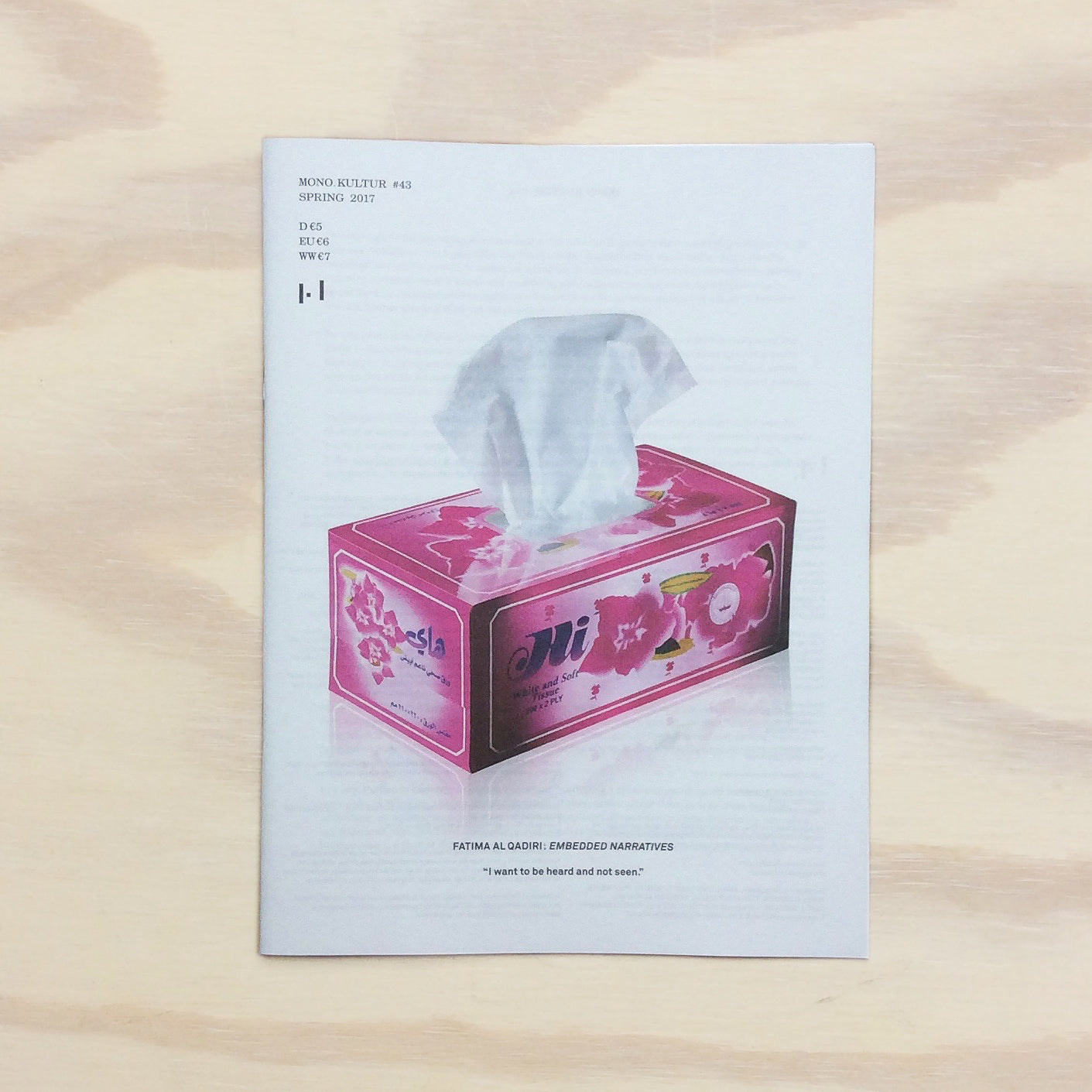mono.kultur #43 - Fatima Al Qadiri
mono.kultur #43 - Fatima Al Qadiri
Daniel Berndt
mono.kultur
2017
Softcover
20 x 15 x 0.4
37 pages
Normaler Preis
5,00 €
Normaler Preis
Verkaufspreis
5,00 €
Grundpreis
pro
inkl. MwSt.
Verfügbarkeit für Abholungen konnte nicht geladen werden
“I want to be heard and not seen.”
The video game Desert Strike was launched in 1992 for the Sega Genesis console to great commercial success. Published only a year after the first Gulf War, it was the first shoot ’em up game directly modelled on real life events, or rather, on a real war. It marked a new level of cynicism in the gaming industry, and what made it even more unsettling was its almost immersive approach, as embodied by its soundtrack, or its absence of soundtrack – Desert Strike featured no music, but a layer of ambient sounds, further blurring the lines between reality and entertainment.
Twenty years later, Fatima Al Qadiri tried to fill the silence with her EP Desert Strike, reclaiming the game by composing a dark and threatening soundtrack, setting fractured melodies against a dense tapestry of lingering soundscapes, heavy bass lines, fragments of processed choir pads, and sound effects. Desert Strike evokes a cold and distant, sparse environment that is oddly static, and it makes for a good example of the sonic and visual universe of Fatima Al Qadiri.
Bending and fusing different genres of music, the Kuwaiti producer and visual artist has released a handful of largely instrumental albums that often imply narratives wrapped in a dystopian atmosphere, evoking an uncanny imagery of our increasingly oversaturated and disorienting information age. It is a simple yet complicated sound that owes as much to electronic music and video game soundtracks as it does to Russian composers and Arab musical traditions.
It is music that draws not only from an eclectic range of contrasting influences, but from a layered personal background: Born in Senegal, Fatima Al Qadiri grew up in Kuwait, but was exposed to electronic music and club culture during frequent stays in London and studies in the USA. She began experimenting with writing music as a child and later took composing courses during her undergraduate studies in linguistics at New York University.
It is also in New York where she soon established her own place within the art and music scenes, as comfortable producing music in her own name as she is conceiving art installations as a member of the artist collective GCC or providing sound to the fashion shows of labels such as Telfar and Hood by Air.
But regardless of the genre or medium, almost all of Al Qadiri’s work is defined by the thematic undercurrents that run throughout her records, installations, and collaborations, dealing with cultural stereotypes, notions of place and displacement, regional and global politics, and concepts of national but also gender and sexual identity.
Her interest in semiotics and how language determines our way of thinking has remained a lasting concern that Al Qadiri has also applied to the language of her music and art practice. The distinct aesthetics of her record covers and PR images often tap into the hyperreal, evoking corporate and cultural visual codes. It extends all the way to Al Qadiri’s highly stylised appearance, embodying an almost sleek aloofness.
In a way, Fatima Al Qadiri seems more interested in creating a sonic and visual space for thought and reflection, in filling the silence, proposing a shift of perspective rather than, as is so often the case with music, an emotional escape. Hers is a sound very much of the here and now, channeling not only a multi-layered past, but a complicated present, processing a flux of input and information. Sound as a filtered reality, a kind of digital compression of personal obsessions and contemporary concerns.




